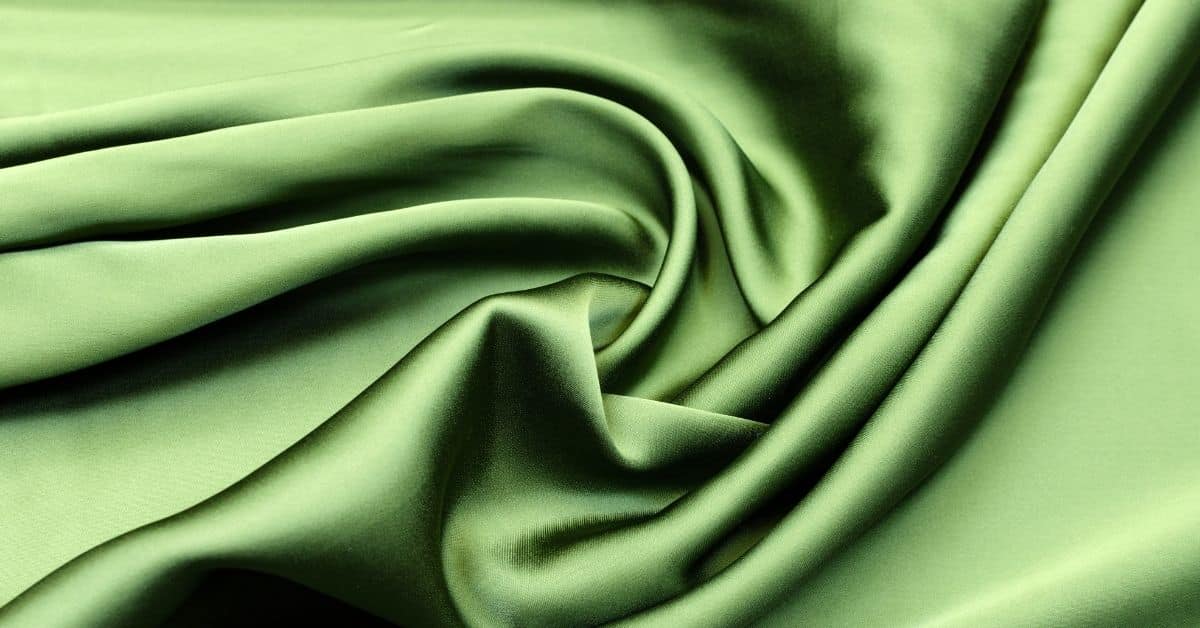What is Viscose Fabric?
Viscose fabric is a silk alternative created from a semi-synthetic rayon fabric manufactured from wood pulp. The drape and smoothness of this fabric are similar to those of the premium cloth. It makes from wood pulp that processes and spins into threads before being used to manufacture fabric. Viscose fabric is one of the world’s most popular fabrics because it is durable and soft to the touch.
Table of Contents
How Is Viscose Fabric Made?
Viscose is manufactured from beech, pine, and eucalyptus tree pulp, although it can also manufacture from bamboo fiber. Because of the various chemicals required in the viscose process, such as carbon disulfide and sodium hydroxide (NaOH), Viscose is considered semi-synthetic.
Step-01: The plant is crushed into wood pulp, and chemicals such as sodium hydroxide are dissolved, resulting in a dark wood pulp solution. Following that, the dark wood pulp is cleaned and bleached.
Step-02: The pulp is treated with carbon disulfide and then dissolved in sodium hydroxide to form the viscose solution, which is used to make the viscose fiber.
Step-03: The viscose solution-driven through a spinneret, a mechanism that produces regenerated cellulose viscose fiber.
Step-04: This regenerated Viscose is spun into yarn and woven or knitted into viscose rayon fabric.
Viscose Fabric Properties
| Fabric name | Viscose |
| Composition of fabric | Wood cellulose, Synthetic substances |
| Breathability | High |
| Yarn count | 300-600 |
| Moisture-wicking abilities | High |
| Stretchability | Medium |
| Abilities of heat retention | Medium |
| Prone to bubbling | Medium |
| Washing temperatures | Cold |
| Commonly used in | Clothing, silk alternatives, industrial belts and household items |
Types of Viscose Fabric
Viscose can be manufactured in a variety of methods, and each technique produces a distinctive sort of fabric. The following are some examples of the many types of Viscose available for industrial use:

i) Nitrocellulose Viscose:
Nitrocellulose Viscose was the first form of Viscose to be created. Nitrocellulose viscose was very flammable and more costly to manufacture than cuprammonium Viscose.
ii) Cuprammonium viscose:
Manufacturers began employing cuprammonium viscose for textiles in 1899. In 1904, Viscose makes that felt almost as silky as natural silk. Cuprammonium viscose production halted with the introduction of new viscose manufacturing technologies.
iii.) Modal Viscose:
Modal Viscose is substantially more potent and tensile than regular rayon, and it’s frequently combined with cotton and spandex to manufacture underwear and bedsheets in the home and on the go. It is one of the premium viscose fabrics in the world. Modal Viscose is less likely to be pill than cotton, and unlike regular Viscose, it can tumble dried.
Viscose fabric Characteristics
If you’re searching for a lightweight fabric with a lovely drape, a shiny sheen, and a soft feel, Viscose is a terrific choice. It is reasonably priced and may express luxury at a considerably lower price. Cotton, polyester, and spandex are just a few of the other fibers that work nicely with it.

- Viscose is light, soft and airy, making it ideal for summer tops and dresses. While the material
appears to be silk, it is cotton. - It’s a lightweight fabric that doesn’t cling to the body, making it ideal for summer wear. The
fabric is not stretchy, but it may be combined with other fabrics to create stretch, such as
spandex. - Viscose does not retain heat but absorbs water and perspiration well, so it is a fantastic fabric
for t-shirts and athletic clothing. Even after several washes and lengthy periods of usage, Viscose
may keep color without fading.
What is Viscose fabric used for?
Viscose fabric is used for most applications, it is used to manufacture a broad number of different kinds of apparel, including dresses, shirts, jeans and, dress slacks, as well as domestic products like towels, washcloths, and tablecloths. This lightweight and soft fabric are commonly seen in scarves, shawls, and nightgowns.
Viscose is also used in industrial settings occasionally. Some business owners believe Viscose is a more cost-effective and long-lasting alternative to cotton. Various types of tires and automobile textile products, like belts, for example, now use Viscose instead of cotton fibers. The Viscose used in that kind of application is stronger and more elastic than the Viscose used in clothes.
Difference between Viscose and Rayon
Many people considered viscose and rayon as the same fabric. Actually, it is not. Both are cellulose-based semi-synthetic fabrics.
| Viscose | Rayon |
| 1. Produce by cellulose xanthate process. | 1. Produce by a cellulose immersion process. |
| 2. Plant fiber use. | 2. Wood pulp, wood pulp, cotton litter, and bamboo is used to produce rayon. |
| 3. Inflammable fabric. | 3. Flammable Fabric. |
| 4. Soft and durable. | 4. Not as much as viscose |
| 5. Stretcher at water. | 5. Shrinks at water. |
| 6. Don’t stain oil. | 6Keep the stain mark on the oil. |
| 7. Less absorption capacity. | 7. High absorption capacity |
| 8. Costlier Production. | 8. Cheap comparatively. |
